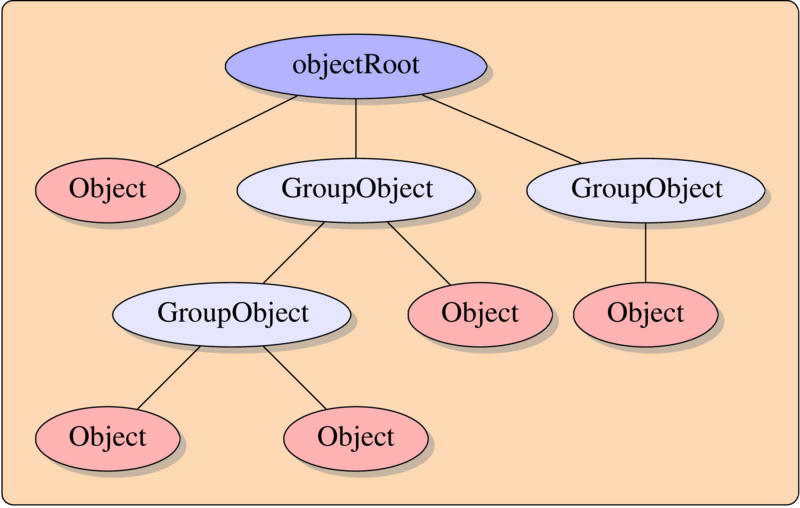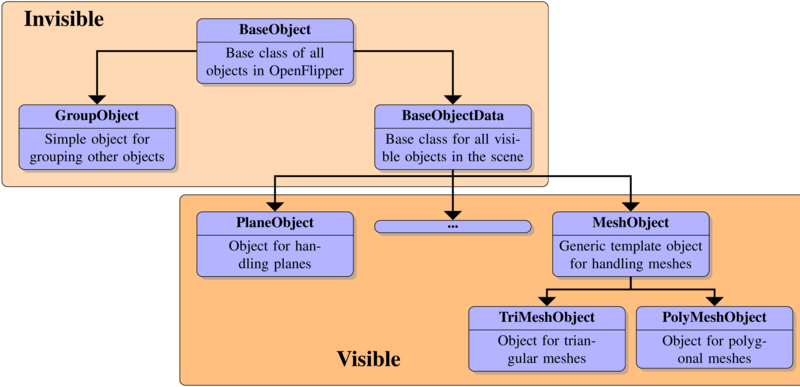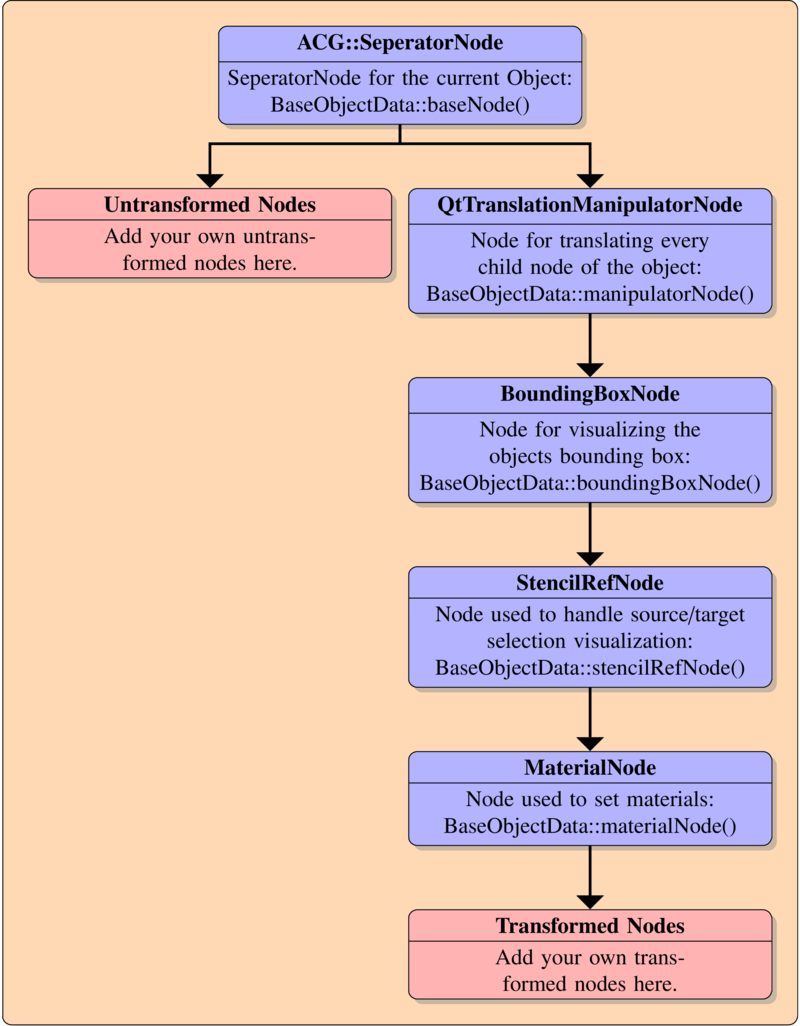|
Developer Documentation
|
|
Developer Documentation
|

All Objects in OpeFlipper have to be derived from the BaseObject. For the predefined objects this is already the case. In BaseObject a tree structure is implemented. You can use the functions in BaseObject to search for items and access them. A root Object is created by OpenFlipper which is the root of the object tree. You can get it via PluginFunctions::objectRoot(). There is also a GroupObject which holds no data and is used for grouping different objects like in the figure above.
All objects in OpenFlipper are handled by the core. To create and delete objects use the functions provided by the Load/Save Interface. Additionally there is a small example on how to add empty objects to the scene which can be filled by the programmer: Adding empty Objects in a plugin
The object hierarchy of OpenFlipper is shown in the following diagram:

In most cases, you do not have to access the data or scenegraph nodes described in the following sections, as the predefined types already handle this for you. You can directly work on the meshes and tell OpenFlipper about the changes and the core does the relevant updates. If you want to create your own data types, you should definitely read the following information.
All objects are derived from BaseObject. This object implements the basic object functions. It creates a tree structure of all available objects, includes object selection, name and type information. It does not contain any code to visualize objects. Each object derived from BaseObject has a DataType function BaseObject::dataType() which can be used to identify which is the actual DataType, as the class BaseObject is never used directly but only via derived classes.
Additionally the BaseObject class implements the PerObjectData system. You can append additional data to each object in the scene via BaseObject::setObjectData() ( see Per Object Data ). This data will be handled by the core. You always have a container for the specific object, which also gets destroyed, when the object itself gets destroyed.
The GroupObject does not have a visible representation in the scene. It is only used to group several objects in the object tree. This grouping is also visible in the DataControl plugin.
This class is derived from BaseObject and includes basic visualization functions. It creates the basic scenegraph nodes for the object.
For every object, the top scenegraph node is a SeparatorNode which you could get via BaseObjectData::baseNode() . All other nodes ( including per object custom nodes ) have to be added below this node. Additionally a ManipulatorNode is added below the separator node. This manipulator is used to move or transform the object. Normally this node is managed by the move plugin. There are also additional nodes below, which are described in the following figure.

Usually you should append your own nodes below the last created node which is: BaseObjectData::materialNode().
If you want to create your own object types which should be visible in the scene, you have to derive from this class! In the image above, you see that the available rendered object types (e.g. PlaneObject, MeshObject) are already derived from that class.
MeshObject is the class representing triangle or polygonal meshes. It is special due to the fact, that there is a general MeshObject class, which is basically a template object class. The usable classes are derived from it(TriMeshObject,PolyMeshObject). All of them use OpenMesh as their mesh representation. It is based on BaseObjectData and adds some additional scenegraph nodes.
See Triangular Mesh (DATA_TRIANGLE_MESH) and Polygonal Mesh (DATA_POLY_MESH) for the detailed documentation.
From each plugin you have to get access to the data. Functions to get the right data are provided by the build-in ObjectIterators(Iterators and their usage ). If you need consistent data access during the plugin lifetime (e.g. you have to track one mesh during the plugin lifetime) you should use the identifiers made available by the objects which never change( Identifying Objects).
It is possible that the vector containing the objects changes during the plugin lifetime (added or deleted objects). Only the identifiers will stay constant. If changes occur, the plugins will get notified. More information about the update Notification system is described in the BaseInterface documentation (General update notifications )
Objects in OpenFlipper get a unique id when they are created. This id will not change during runtime. It is possible, that pointers change so you should only use the id to reference objects in your plugins. To get this id, just call the BaseObject::id() function. To get an object with a specific id, you can use the PluginFunctions provided by the data type (e.g. PluginFunctions::triMeshObject(int) ). This way, you will always be sure to get the right object.